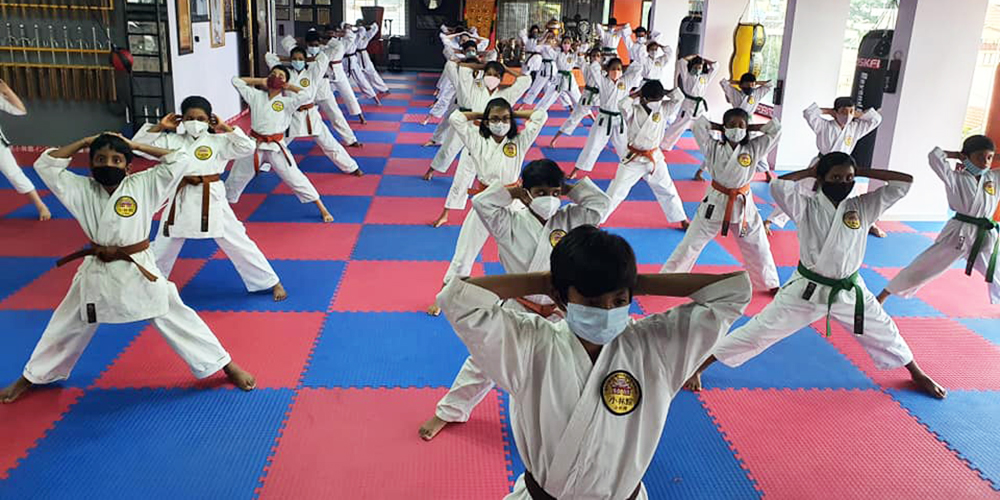
• Upon entering and leaving the training floor all students must show respect by bowing to the Shomen ('front') area.
• Decent appearance and personal hygiene are of great importance in Traditional Karate-do. All students are expected to be neat and clean at all times when training. Toenails and fingernails are to be properly trimmed to avoid any kind of injury. The training uniform is expected to be neat and clean. The official training uniform for Traditional Karate-do is the white training uniform (Gi) without any markings except for the association or the Dojo emblem. Trimming the uniform or any additional writings/markings will not be permitted.
• When lining up for class, the highest-ranking student will be to the right of the Shomen area. If more than one student is of the same rank, then the one with the longest time-in-grade will be to the right If both have the same time-in-grade then the oldest will line up to the right.
• Before the beginning of class, the senior student will call the class to attention and bow to the respective Shomen area. He/she will then direct the class to bow to their Instructor. The same will be repeated at the end of the class.
• Should the Instructor ask a student a question, the student will answer in a respectful manner with a yes or no, sir. Should a student wish to ask the Instructor a question, then the student should bow and address the Instructor with respect. The same courtesy is expected when a student with a higher rank is authorized to take over a class.
• Talking in class in not allowed at any time. All questions concerning techniques or other matters should be directed at the Instructor either before or after class. Only the Instructor is to talk during class or one so designated to teach the class by the Instructor.
• As a matter of good conduct, no student will ask a higher-ranking student or Instructor to spar. There will be no sparring in the dojo without the permission of the Instructor.
• No student will excuse themselves from class without obtaining permission from the Instructor.
• When entering the training hall you must enter with the intention of training. When you put on your training uniform you should put it on with the wish to train seriously. During training, a senior student is obliged to assist the Instructor in training the trainee belt grades.
Bowing Methods:
• Ceremonial Bow
This is the traditional kneeling bow (seiza). It shows a great deal of respect. It is also the formal Japanese way of sitting on the floor with one's knees bent. Seiza literally means to "sit correctly" and requires that a person sit not rigidly but with his back straight and with an alert feeling. While sitting on one's heels, you will then place the right-hand palm down in front of the right knee and then follow with the same using the left hand. You will then bow forward deeply. The ceremonial bow is used in the following instances:
1. As part of the bowing in procedures in a formal class.
2. As part of the bowing out procedures at the termination of a formal class.
3. When requested to sit to receive formal instruction in technique, theory or history.
4. When receiving a special award or presentation.
5. When formally awarding a rank of black belt.
• Student-to-Instructor Bow
This is a standing bow (Tachi-rei). With the hands at the sides, bow forward to a 45-degree angle. This bow is done at the waist and not at the neck. Bow smoothly without any jerk. While bowing, lower the eyes to the floor.
The student-to-instructor bow is used in the following situations:
1. Whenever the instructor bows to the student, the student should respond immediately with this bow.
2. The student should respond and initiate the bow in the following instances:
a. When a senior ranking black belt enters the dojo.
b. Before asking a question to the instructor and after receiving a reply.
3. This bow is also used in the following situations- When entering or leaving the dojo.